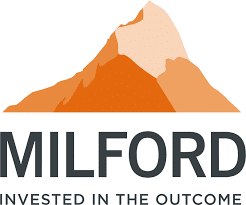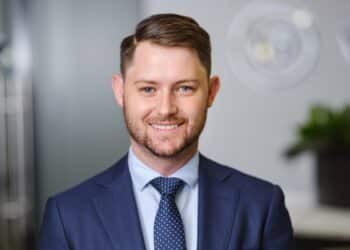Since establishing an Australian business, Milford has launched three funds. We sat down with its head of Australian business, Kristine Brooks, to discuss their outlook on the Australian markets over the next 12-18 months and what’s to come as the country emerges from the COVID-19 pandemic.
Tell us a little bit about Milford and what the business does.
We certainly have a very established and successful business in New Zealand. But over recent years, the business decided to make a really, strong commitment to the Australian financial services market. I think there are a couple of things that really shine through about Milford. One is that the business in New Zealand is very established in the direct markets. So as an asset manager, they’re very used to talking to direct investors every day. In Australia, however, we’re very intermediated. So, we distribute a lot through financial advisers, and I think, sometimes, fund managers based in Australia don’t actually have to sit in front of a client and have those conversations, we let the advisers do it.
But I think because Milford is used to having that responsibility, our client experiences are much stronger, as is the commitment to make sure that the portfolios perform. Whilst it’s a new name here, I hope it’s one that people are curious about. I don’t think there’s been an emerging new manager in the market for quite some time. So, we’ve actually found it really lovely, to be honest. People have been curious and have really given us the time to explain who Milford is.
What is your take on the outlook of the Australian markets over the next 12-18 months?
It’s been an incredible period. I think if you had asked me at the start of the pandemic, when we were really starting to get a lot of noise around the seriousness of this virus, I would not have anticipated the market outcome that we’ve actually seen unfold. I would have expected a lot more volatility and potentially, under performance. But I think there’s just been so much money going into the system, and I see it as a bit of a trapped world phenomenon when people haven’t been able to spend money on other things, especially in Australia. We’ve found people who’ve taken the opportunity to really reassess their financial position and their financial strengths and are quite focused on their investments. On the other hand, obviously, there were a lot of job security issues for many people. I think it was quite binary – if you were able to remain employed (in what we refer to as desk jobs), if you could work from home, potentially your expenses actually reduced and you were able to find some excess funds, whether that was to invest or to spend on other things. But if you didn’t have a desk job and you weren’t able to work from home, there have been really serious financial consequences. We found people that were becoming even more at risk financially, which is quite devastating.
Markets have, however, really continued to be quite strong. I think we’re in a position at Milford where we don’t only look for continued outperformance, we also turn our sights to downside protection and making sure that our portfolios are positioned well if we are to hit periods of volatility. For that reason, we’ve definitely seen some strong outperformance over the period which is great. We are a very active manager and we’re very committed to strong investment outcomes for our clients.
What opportunities for investors would Milford recommend?
As an example, we have a fund in Australia, our Dynamic Fund, which is a small to mid-cap play and which has performed well for our clients. One thing that we see really, positively impacting that portfolio is founder led businesses, which is quite an interesting thing. If you think about it for five minutes, of course it’s a positive investment idea – success can come from people that are running their own business, have skin in the game, are still part of the business, and continue to give their blood, sweat and tears right through the listing process. We’re seeing really strong impacts on the portfolio from that perspective. So that’s one idea. I think the other aspect potentially on the risk side to keep an eye on is inflation risk. Our portfolios are well positioned if we move into an inflationary period and if we start to see some changes to interest rates that will also be a very interesting phenomenon. I think there are a lot of people taking on significant levels of risk, which begs the question: Can people sustain the repayments required? Are interest rate rises, and what that could do to the economy and potentially to markets, being fully factored in? So that’s one idea that we’re keeping an eye on, for sure.
What is Milford doing in the advice space?
Well, a big part of our strategy in Australia, and since I joined late last year, is supporting the advice community, and having our funds considered by advisers for their clients’ portfolios. So initially, we’ve made sure that we’ve stood up a team that can support advisers in Australia really, strongly. I’m really thrilled with the calibre of people that have been attracted to Milford and who we’ve been able to hire. So that’s a big part of it – resourcing to make sure that we can support advisers in the best way possible and to provide that support locally. I think the other thing that really makes sure that we’re aligned with our adviser partners is there’s real skin in the game at Milford. Employees of Milford can only invest in Milford, so it’s a really big decision you need to be comfortable with when you join.
2022 – the year of market volatility and opportunity
This year investors will likely experience higher levels of volatility. Read what’s behind the moves and how investors can make the most of it.
Read more




